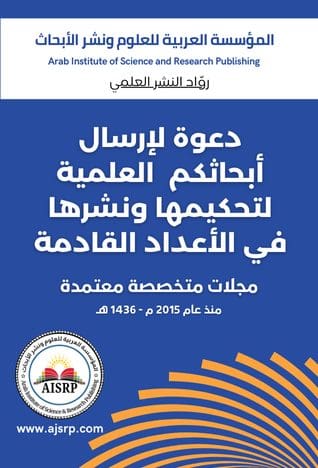Effects of urban sprawl on temperature average of north Riyadh city using Remote sensing
Abstract:
The city of Riyadh is witnessing a significant urban expansion in recent years, causing increasing in the coming years high temperatures which expected to increase
The objective of this research was to monitor the urban expansion in the north of Riyadh for the years 1985, 2000 and 2016, and to identify the average temperature of those years and to measure the correlation between of urban expansion on the average temperature and then to get the visuals of April of Landsat 4-5 1985 and 2000 from the Landsat 8 satellite visible in 2016 then use the program Erdas, Arc map in the classification of land use and extraction of temperature through the equation and the using Pearson correlation coefficient to test the correlation between an urban sprawl and temperature means. The results were as follow:
1- neighborhoods north of the city of Riyadh in a marked Urban expansion in 1985 the rate of change 3.3%, while in 2016 reached 16.6%.
2- The average temperature of the air April was the least heat in 1958, reaching 13.4° while in 2000 it was found in the cold months was 14.9° and in 2016 was 15.5°.
3- The average temperature of the surface based on space visuals found that the greater the built-up area the higher the temperature in 1985, from April, it was 11.5 °, while in 2000 it was 27.5°, and in 2016 it became 30 °.
4-The relationship between urban growth and high temperature during the period [1985_2000_2016] was a moderate correlation coefficient of 0.68, Is insignificant because P-value (0.517) is less than 5% indicating the effect of urban expansion on the rise in temperature.
Keywords:urban sprawl, temperature, Remote Sensing, Riyadh City
الملخص
1- أحياء شمال مدينة الرياض في توسع عمراني ملحوظ في عام 1985م نسبة التغير 3.3% بينما في عام 2016م وصلت إلى 16.6%
2- أن متوسط درجة حرارة الهواء شهر إبريل الأقل حرارة في عام 1985م حيث بلغ 13.4°، بينما في عام 2000م تبين من ضمن الشهور الباردة وبلغت 14.9° وفي عام 2016م بلغت 15.5°، أي أن متوسط درجة الحرارة لشهر إبريل كانت الأعلى في عام 2016م.
3- كلما زادت المساحة العمرانية تزداد حرارة السطح وذلك بالاعتماد على المرئيات الفضائية ففي عام 1985م من شهر إبريل كانت 11.5° درجة مئوية، بينما في عام 2000م بلغت 27.5، وفي عام 2016م أصبحت 30 ° درجة مئوية.
4- العلاقة بين النمو العمراني وارتفاع درجة حرارة السطح خلال الفترات (2016، 2000، 1985) كانت علاقة ارتباط طردية متوسطة بقيمة 0.68 وغير معنوي لأن قيمة P-value (0.517) فهي أقل من 5%مما يدل على تأثير التوسع العمراني على ارتفاع درجات الحرارة
الكلمات المفتاحية: التوسع العمراني، الحرارة، الاستشعار عن بعد، مدينة الرياض
الباحثة /
شيخة محمد العاجزة
كلية الآداب || جامعة الملك سعود || الرياض || المملكة العربية السعودية



